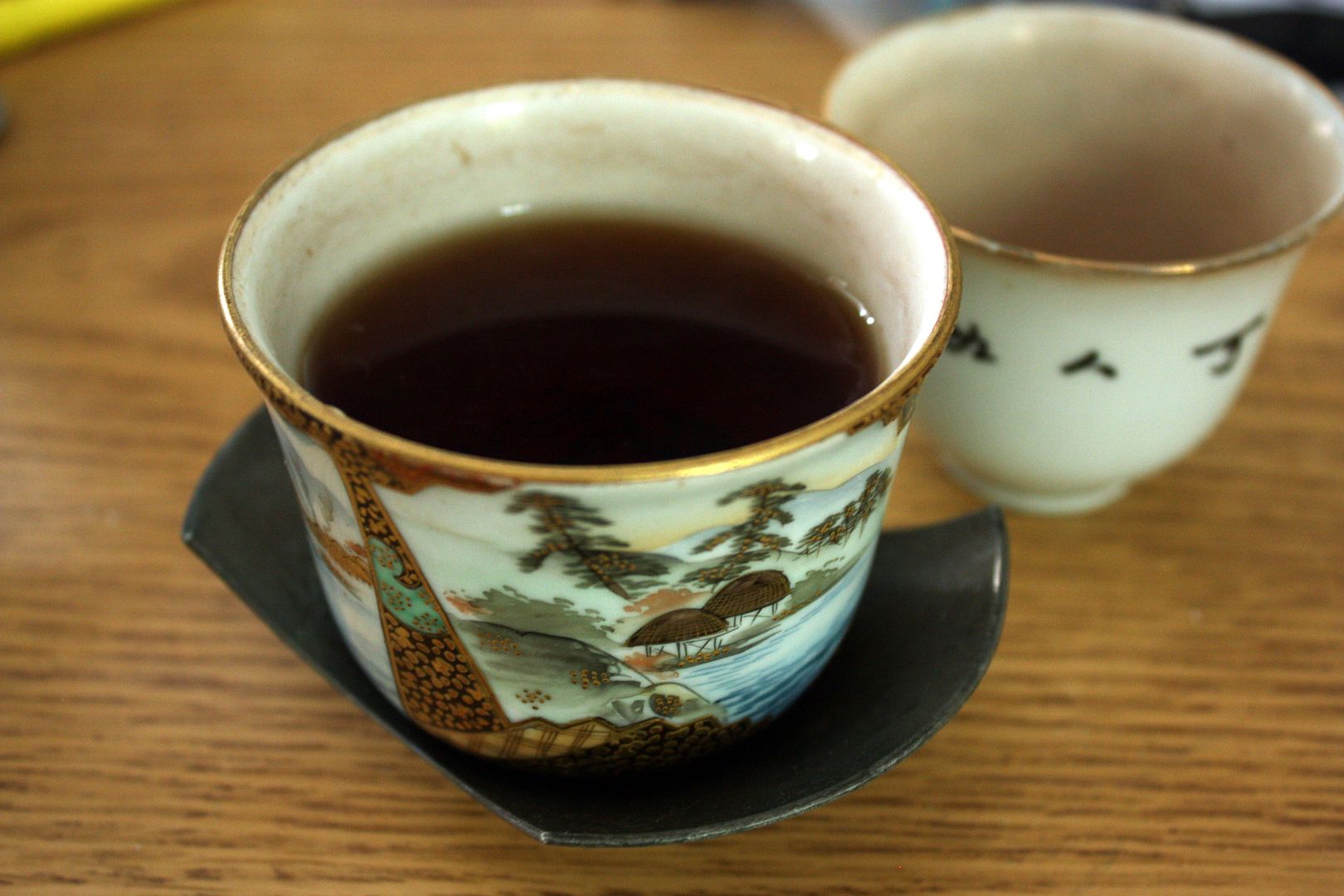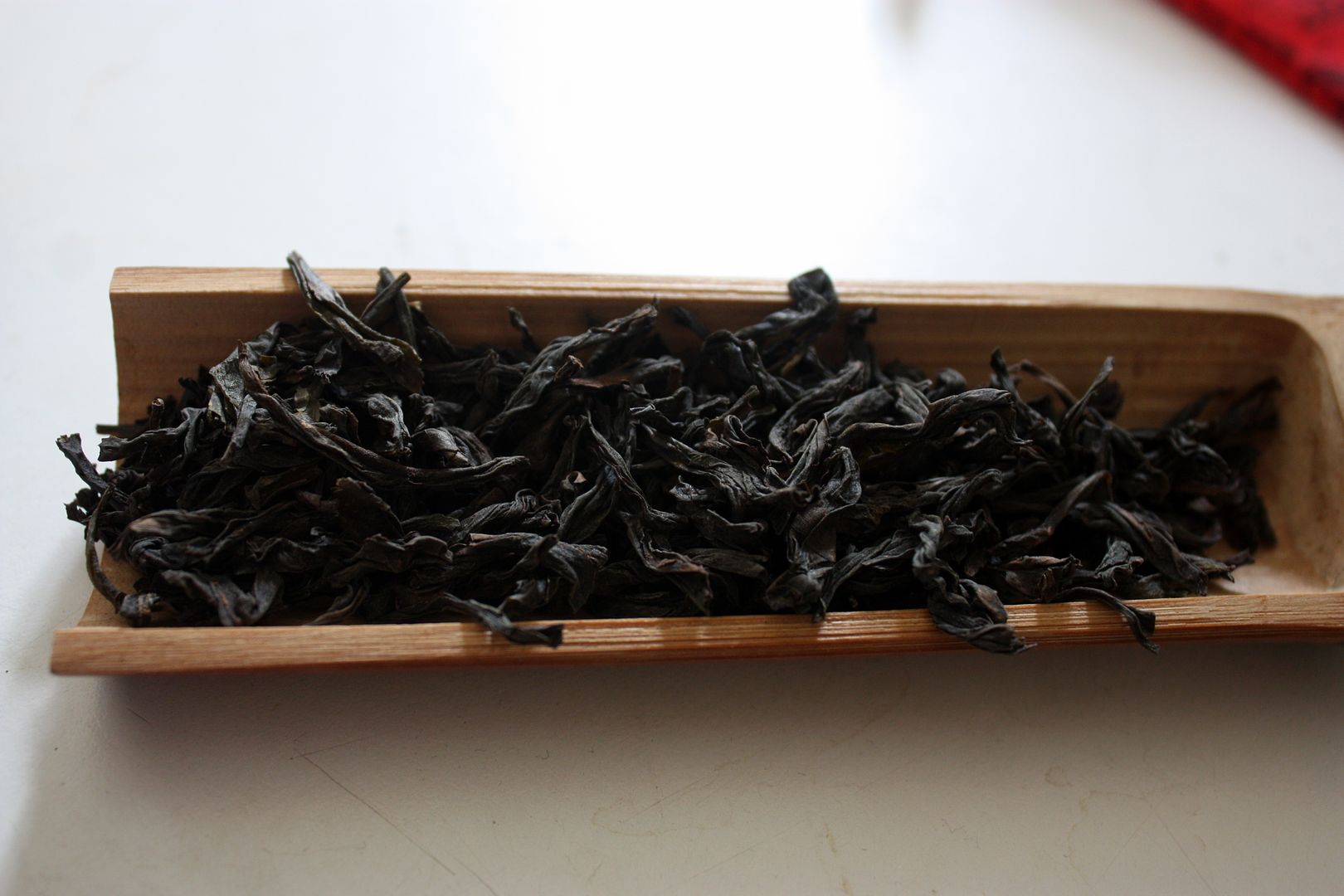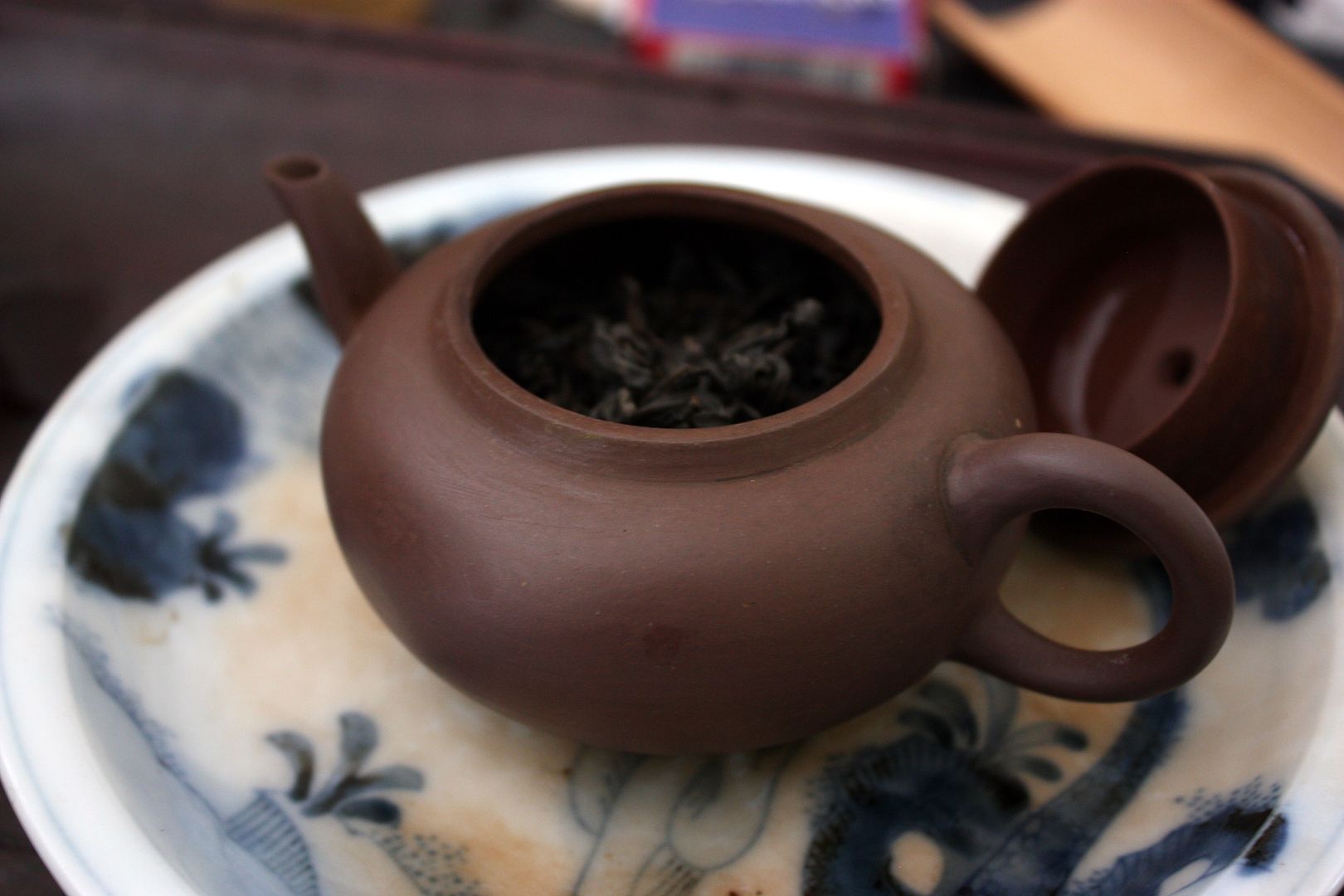I’m in Beijing at the moment, visiting my friend L and drinking tea with his friends. One of the teas I had today was a mixture of a some bits and pieces from a Mengjing mushroom tea from Republican days, and a good chunk of leaves from a 60s Blue Label iron cake. While the tea is quite nice and has obvious qi, at the same time I can’t help but think that all the cost of this tea is not necessarily worth it. After all, at over $100 USD for that brew if you were to pay for it, the tea is nice, but not that nice. The qi is certainly something you don’t get with younger teas — an aged tea of enough years is going to be different from your young stuff, no matter what. Yet, I’m really not sure if this is really worth it for a lot of people. So many people chase this stuff so that now they are priced out of pretty much everyone’s range. But if you drink it, and compare it to something like say 1960s Guangyungong tea, the difference is not so earth-shatteringly big that it merits the many multiples of price that it commands.
This is really a dilemma not only of aged tea, but all teas in general. Is that dahongpao that is very good really worth 10x that dahongpao that is only so so? Sure, perhaps. At some point, however, every individual will hit a threshold above which they will not go in terms of cost/benefit. While it is not always a good idea to measure a tea’s worth in how much pleasure it gives you per dollar spent, at some point that does come into play, and at this moment, for me, I think that many of the aged puerh on the market today are simply not worth the amount of money they command for me to want to actually buy them for drinking purposes. I’m quite happy with my current selection of tea that I possess, and find little compelling reason to chase such expensive teas. To buy them is to buy something rare and unique, something not easily found, especially if we’re talking about pre-1970s tea. That rarity, however, commands a huge premium. The reasons for purchasing these teas quickly leave the realm of “this is a good tea and is tasty” to “this is something that I can use to show off with” or “this is something that displays my knowledge of tea” or something similar. In my opinion, those are not good things to pay for. Nor, I think, should we expect that any tea produced today will command a similar level of prices come their 40th or 50th anniversary – the production level is so much higher now than it was back in the day, and so much more care has been put in to preserve these teas, that I think decades from now we will still have a relatively large supply of such things. The only good reason to buy a tea is because you like to drink it.









 RSS - Posts
RSS - Posts
I took you at your suggestion and have been reading some of your old post-Covid posts. I haven’t been to…